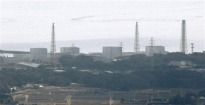Fukushima: The Story Thus Far
One way of looking at the drama that has unfolded around the Fukushima Daiichi nuclear reactors is as a narrative with one central plot, and a number of sub-plots distracting the attention.
The main story is well established. At 14:46 local time on 11 March, a magnitude 9 earthquake struck off Japan's north-east coast.
The 11 operating nuclear power reactors in the region all "tripped" as designed (the nuclear fission process was stopped).
However, the fuel in a nuclear reactor continues to produce considerable amounts of heat even when fission has stopped, and the key task - the main plot in this drama - is to keep water circulating over the fuel to remove that decay heat.
This is to prevent damage to the fuel rods, and to the containment around the reactor - the thick steel pressure vessel and the surrounding concrete structure designed to keep fissile material isolated from the outside world in all circumstances.
Mains electric power to the pumps providing this cooling water was lost in the earthquake, so back-up diesel generators kicked in, again as designed, and all looked good. But an hour later the tsunami hit, taking out the diesel generators and the oil storage tanks. Fukushima Daiichi was designed to withstand a six-metre tsunami - 15 metres was just too much.
All the reactors except Daiichi 1-3 were brought into "cold shutdown", with water circulating as required, some after minor problems. But at the three oldest Fukushima plants, connected to the grid between 1970 and 1974, the loss of power to the pumps led to water in the pressure vessel boiling and the fuel heating up hugely.
The zirconium alloy cans that contain the fuel pellets burst and it is probable that some fuel melted, though we cannot yet be sure about this.
Pressure
The early decision to evacuate people from the immediate area was crucial - it gave the operators flexibility to deal with the immediate problem, which was the build-up of pressure inside the pressure vessel as the water boiled.
Too much pressure would burst the seals in the pressure vessel and allow material to escape, so it was necessary to vent these gases.
However, inevitably, letting the steam out also allowed escapes of hydrogen (caused by the zirconium reacting with water or steam at high temperatures) and small amounts of radioactive material which had leaked from the broken fuel rods.
This was the cue for the first subplot - the explosion in the outer buildings of Reactor 1 on the 12 March, followed by a similar explosion in Reactor 3 on 14 March, caused by hydrogen mixing with air.
Dramatic as the pictures were, these explosions did not seem to damage the containment. On the other hand, an explosive noise from within Reactor 2 on 15 March led to fears that there might be a breach in part of the containment, known as the suppression chamber or "torus" - again, we still do not know for sure.
By now, with no power available on site, the water level inside Reactors 1 to 3 was sinking and the fuel was seriously overheating.
Click here to read more.


